The Different Parts Of A Marijuana & Cannabis Plant
Before cannabis was legal and CBD was a hot-ticket item, you weren’t getting your weed in a nice package. You probably didn’t know what strain it was. All you got were buds from your dealer and you were on your way. And CBD oil? Forget about it. No one uses that stuff.
In those days (okay, just two years ago) your only interaction with marijuana was probably grinding it, rolling it, packing it, and smoking it. Done. Over.
Since Canada legalized cannabis, more people have the chance to really explore the ins and outs of this plant. You can pick out your strain. People are talking about the chemical makeup of each product. Homeowners can grow it without having to worry about the police showing up.
If you really want to explore the cannabis plant, it’s time to dive into the different parts of the plant. When you’re buying from a dealer, you’re just seeing the buds. There’s so much more to the cannabis plant, including some parts that you can bake and consume. Understanding the cannabis plant may also help you decide whether or not it’s time to start growing cannabis yourself.
What Is the Difference Between Marijuana and Cannabis?
Before looking into the specific anatomy of the marijuana and cannabis plants, let’s clear up one thing.
All marijuana plants are cannabis, but not all cannabis plants are considered to be marijuana.
Cannabis is the overarching genus of flowering plants that we know as both marijuana and hemp. Within the genus Cannabis, there are multiple species. These species include:
- Cannabis indica
- Cannabis sativa
- Cannabis ruderalis
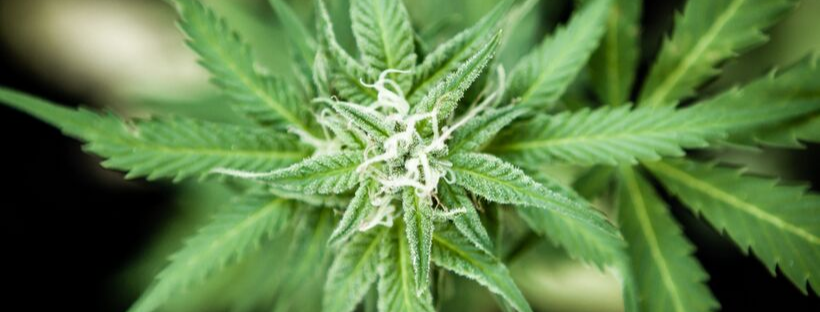
Most cannabis lovers know the difference between indica and sativa based on their effects on the body and mind. Indicas are more relaxing, while sativas are more likely to give you energy and keep you focused throughout the day. But there are other distinct differences between these species, including their shape and how they produce bud.
What Makes Marijuana… Marijuana?
Cannabis sativa and cannabis indica are the sativas and indicas that we know, love, and search for online. But not all cannabis sativa plants will get you high.
The biggest distinction between marijuana and hemp is THC content. Hemp plants typically have .03% THC – marijuana plants have more.
The difference between marijuana and cannabis can get a little tricky, but by learning the different parts of the plant, you’ll be able to get a sense of what you’re smoking, what your CBD oil comes from, and how to grow marijuana plants that fit your needs.
The Different Parts of the Cannabis Plant
If you are familiar with plant structures, some of these words and terms may sound familiar. The cannabis plant, while holding magical powers to bring on the munchies or giggle your face off, is just like many other flowers and plants that we see growing in our yards.
Stem
When you think of your average run-of-the-mill flower, what parts can you think of?
- The flower itself. Cannabis has got that!
- The leaves. Cannabis has that too!
- The stems. You’re already pretty familiar with the cannabis plant.
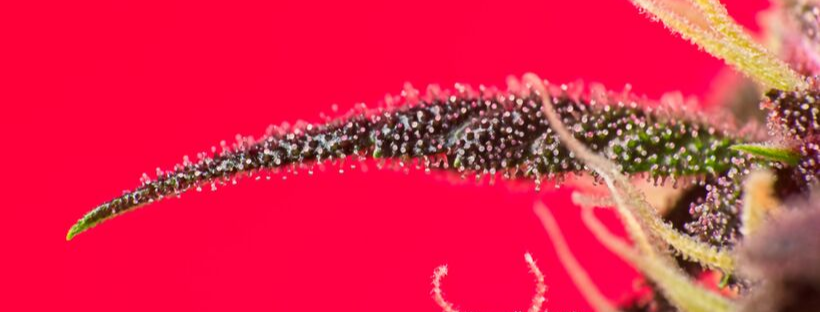
Cannabis grows like many plants. It has a vertical stem that grows out of the cannabis seed.
How can you tell the difference between cannabis sativa and cannabis indica? Look at the height of the plant.
Indicas were traditionally raised in colder climates with shorter flowering cycles. They evolved to have short, thick stems to stay close to the ground. Indica stems have more nodes where leaves and buds grow. Sativas, on the other hand, adapted to warmer climates and grew longer stems. Overall, they have a more narrow frame with fewer nodes throughout the plant.
For years, stems were simply disregarded. The buds were the only thing that people were interested in using. But did you know marijuana stems have THC in them?
Growers should consider using up as much of the plant as they can – after all, they’ve put a lot of time and effort into nurturing their marijuana. In addition to composting stems or using them as mulch, growers can cut up the stems of the marijuana plant and make some cannabis tea.
Fan Leaf
If you picture marijuana, you may picture one of two things: the nuggets of bud that you smoke, or the cannabis leaf. This leaf is called a fan leaf. Cannabis also grows sugar leaves – you can read some information on the sugar leaves later.
The leaf that you’re looking at on a hat or a tapestry is usually a sativa. Like sativa stems, leaves from cannabis sativa plants are more narrow. Indica leaves don’t always look like the ionic marijuana leaf. They’re thick and dense – almost like a maple leaf. Cannabis indica leaves are also typically darker in color and contain more leaflets.
The cannabis leaf is an iconic image in hippie culture, stoner culture, you name it. It’s on hats, backpacks, socks, labels for marijuana products, etc. But the leaf is actually pretty useless to many stoners who just want to get the most out of their joint.
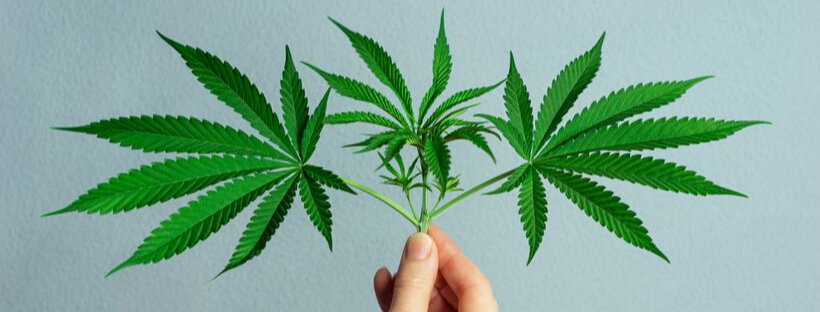
If You Can’t Smoke ‘Em…
All of these parts of the cannabis plant can be used for other purposes. Many people like to collect the stems, roots, and some of the leaves to make cannabis tea. Other leaves can be made into edibles. The entire cannabis plant can be added to your compost pile to ensure that your worms enjoy your yield, too.
The Anatomy of What You’re Smoking: The Flower
The stems and leaves of the marijuana plant are removed long before you get your package. What you’re looking at when you open up a package from Speed Greens are the buds (or flowers) of a female plant.
And yes, there are male plants and female cannabis plants. Male seeds and male marijuana plants are generally disregarded by home growers who just want to produce fat nuggets of bud to smoke. Unless you’re looking to seriously breed cannabis, you probably won’t even buy male seeds.
So let’s focus on the female cannabis plant and the “bud” of what you’re smoking. But first, we’ll zoom out.
Cola
Picture a female marijuana plant with a big, fat bud. This bud is most likely enjoined with other buds in the cola of the plant. The cola is the cluster of buds that come out of the top of the female cannabis plant.
The main cola of the cannabis plant is at the top. It’s called the apical bud. But there are other, smaller colas that grow throughout the cannabis plant. Proper pruning and care of your cannabis plants will help to maximize your yield and get more out of each cola, top or bottom.
Within the cola are different parts of the bud that you can smoke, bake into edibles, or use to foster the growth of more marijuana plants.
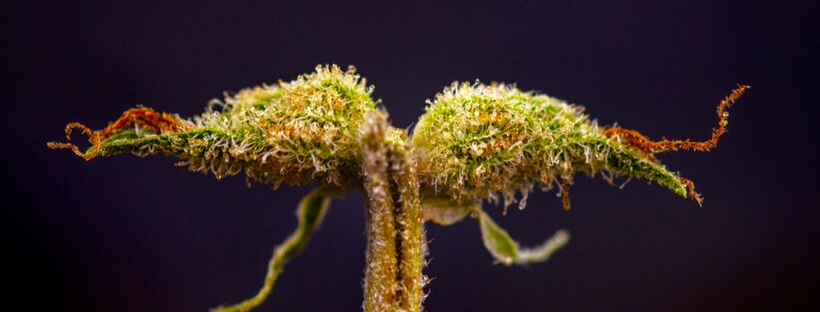
Calyx
The bud itself is also known as the calyxes of the plant. They act as the base of the overall flower and play a role in protection, fertilization, and the quality of the bud that you end up smoking.
Pistils
The calyx is essentially accompances the entire reproductive system of the female cannabis plant. This includes the pistil. Pistils are the first things that grow out from the bud. While they start out as a white, hairy part of the plant, they eventually turn orange or red. All of those orange hairs you see on high-quality bud? Those are pistils.
Budtenders love to show off the unique pistils on each strain. Different strains will have different pistils and it gives the bud a dank look. Funnily enough, they don’t contain THC.
The pistils aren’t concerned with getting you high. They are concerned with catching the pollen from bees so they can be fertilised. Yup, along with lilacs, lavenders, and plenty of other plants, bees play a big part in fertilising marijuana. If it weren’t for bees, we would have never been able to grow and smoke weed!
What is concerned with getting you high? Sugar leaves. They are the green part of the bud, and one part of the bud that contains THC. You can use sugar leaves to bake edibles, make tea, or smoke.
Fertilization of the Bud
When bees pollinate the female plant, the calyx closes up and allows seeds to grow. Essentially, it will become the “ovary” of cannabis. The plant then spends most of its energy growing the seeds rather than producing hearty buds.
So as a smoker, you don’t want these calyxes to be fertilised. If the calyx are left unfertilised, you’ll get more trichomes – described below – that are high in cannabinoids and other active ingredients. It’s also the part that growers end up harvesting (and you end up getting in your package from SpeedGreens.) This is why cannabis plants are better off growing indoors and away from bees.
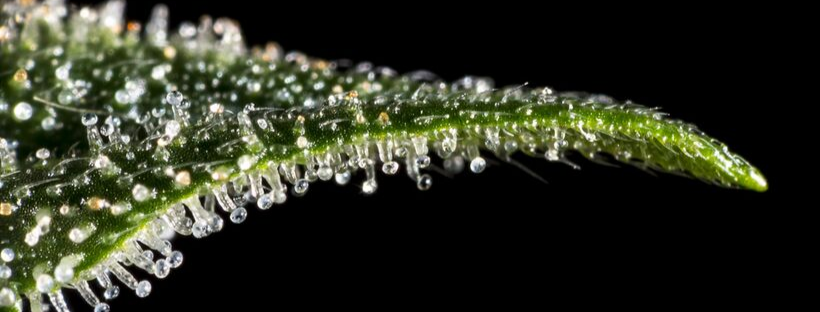
Trichomes
If you look closely at the buds of the marijuana plant, you’ll see that there’s a sap-like substance that lies on the top of the bud. This is the good stuff. The resinous stuff you see on the bud are trichomes.
Trichomes contain the stuff you want to smoke, including the cannabinoids and terpenes unique to your marijuana plant. Terpenes give each strain of weed their aroma and flavour. Cannabinoids offer health benefits and may be psychoactive. (THC is the cannabinoid, for example, that gets you high. CBD is the cannabinoid that offers joint pain relief and reduces anxiety.)
Ever heard of resin? That’s this stuff. Ever heard of kief? That’s this stuff, but dry. Trichomes contain a higher concentration of THC than sugar leaves do. They are the key to making weed concentrates like shatter or wax. Ever wonder why concentrates aren’t green like your bud? This is why.
If you grow your own cannabis, you can even extract the resin yourself with just a hair straightener or tortilla press. You simply press your cannabis between a piece of wax paper with some heat and extract the resin that is left behind. (Making shatter or oil is a bit more complicated.)
What Is CBD Oil Made From?
Maybe you’re not interested in smoking marijuana. Maybe the appeal of the cannabis plant is the CBD that it produces. Both hemp and marijuana plants produce cannabidiol (CBD,) a cannabinoid that works with the endocannabinoid system to reduce inflammation and boost mood.
CBD oil comes in droppers on its own that can be mixed with beverages, food, and topical products to produce desired effects. People even buy CBD oil for their pets.
But while you’re shopping for CBD oil, you might find yourself coming across a product with a similar name: hemp oil. The difference between these two products lies in the anatomy of the cannabis plant and where manufacturers source their oil.
CBD oil comes from the stalks, leaves, and flowers of the cannabis plant. These plants usually contain less than .3% THC, so your CBD oil won’t be giving you the giggles or the munchies. Manufacturers may also refer to CBD oil as hemp oil.
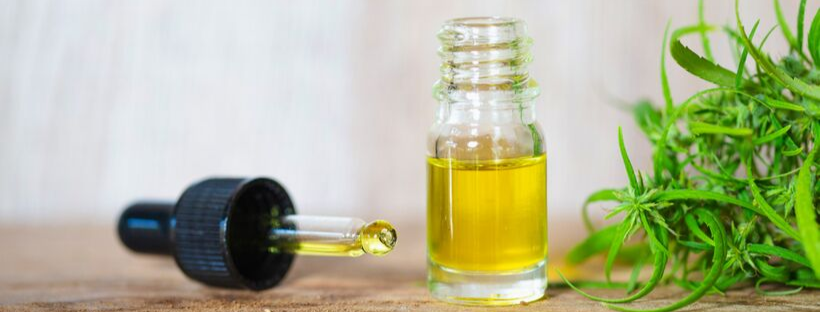
But hemp oil could also be a name for hemp seed oil. Hemp seed oil is made of – you guessed it – hemp seeds. These may just be the same hemp seeds that you can sprinkle into your smoothie or over your salad.
Hemp seed oil contains a very small amount of CBD. It won’t provide the pain relief or mood boost that CBD oil does. It can promote glowing skin and protect brain functioning, but it’s a completely different product than the CBD oil that is taking over the health and wellness industry.
The More You Know, The More You Grow!
Each part of the cannabis plant, from the trichomes to the stems to the fan leaves, play an important role in the life cycle of your favourite strains. Knowing these different parts can help you explore different growing methods and tell you when it’s time to harvest your cannabis.
(Interested in growing marijuana plants? Check out our guide to home growth. Know that you can only grow up to four plants in many, but not all, areas of Canada.)












Comments (5)
I love how informative this was keep it up loved reading this
a good read
Lots of good information here!! So much information, couldn’t imagine being a newbie to cannabis in todays world.
Very informative article, great read
I try my best to waste nothing from my grow. Any seeds get stored away for next season and all the trim gets made in to high quality bubble or canna oil. The flowers get smoked all day errry day haha!
Comments are closed.